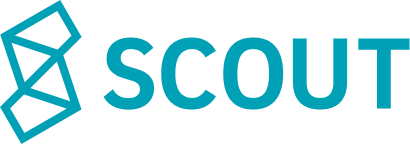Fall 2019 - Spring 2020
City Hall Student Action Portal
We designed a new website to help connect Boston Public School students with experts within City Hall who can support them in their civic action.
The Team

Tia Thomson
Director (F'19-S'20)

Shannon Reilly
Project Lead (F'19)

Katie Kim
Project Lead (S'20)

Joe Annis
Developer (S'20)

Nathan Hostert
Strategist (F'19-S'20)

Ava Nordling
Strategist (F'19-S'20)

Peyton Luxford
Strategist (S'20)

Stella Ikpatt
Strategist (S'20)

Jocelyn Zhu
Strategist (F'19)

Aidan Flynn
Strategist (F'19)

Dilara Sisman
Strategist (F'19)
Our design challenge
Made up of a multidisciplinary group of undergraduate students, the Scout Labs team at Northeastern University partners with the Boston Mayor's Office of New Urban Mechanics (MONUM) to research civic issues in our city and prototype creative solutions.
In 2018, the Commonwealth of Massachusetts passed a civics education bill (Senate Bill 2631: An Act to Promote and Enhance Civic Engagement), mandating that public school districts provide opportunities for students to partake in action civics projects. These projects allow young students to learn about how they can effect change in their communities and solve social issues by engaging with government and community organizations.
MONUM and the Scout Labs team saw these action civics projects as a wonderful opportunity to increase student engagement with the government. We wondered how we could help Boston Public School students work with the local government on their action civics projects and have a meaningful experience. Throughout the Fall 2019 - Spring 2020 school year, our teams conducted research and built a website and service system to help these students better engage with people in City Hall and the work that they do.
Diving into research
We created a stakeholder map as a jumping off point for considering who we should engage in our research. With students at the center, we brainstormed which other stakeholders would be affected by the civics education bill and plotted them on the map based on their connection to the students.
We interviewed many of these key stakeholders to familiarize ourselves with the youth civic action landscape in Boston, including representatives of community organizations, Boston Public Schools teachers, and government officials.
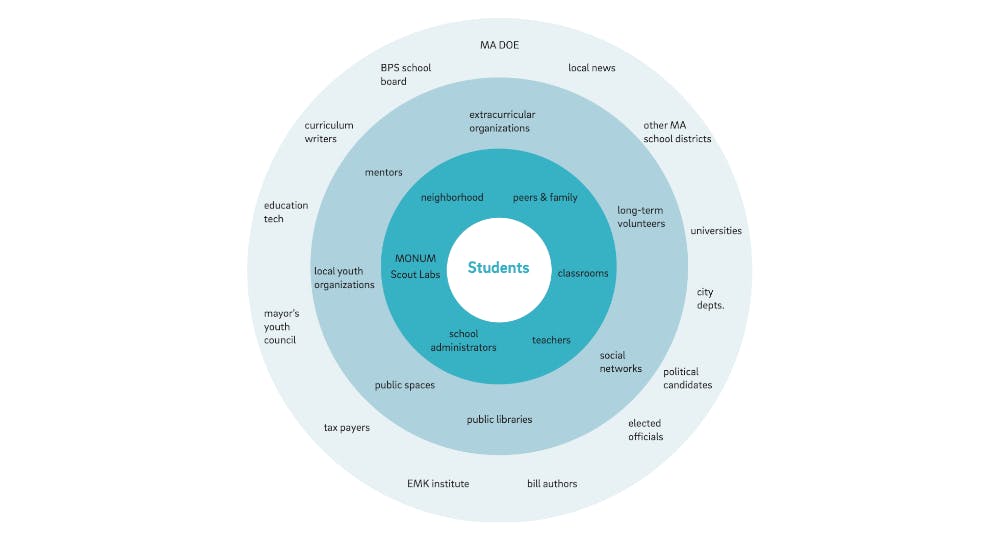
Stakeholder maps are analytical tools used to identify parties that are involved or may be impacted by a particular project.
One of the most important aspects of our research phase was getting into classrooms and talking with eighth grade and high school students. Through classroom workshops, surveys, and interviews, we engaged over 250 students from four different schools across Boston to learn more about their attitudes towards local government, motivations for change-making, and passions about specific social issues.
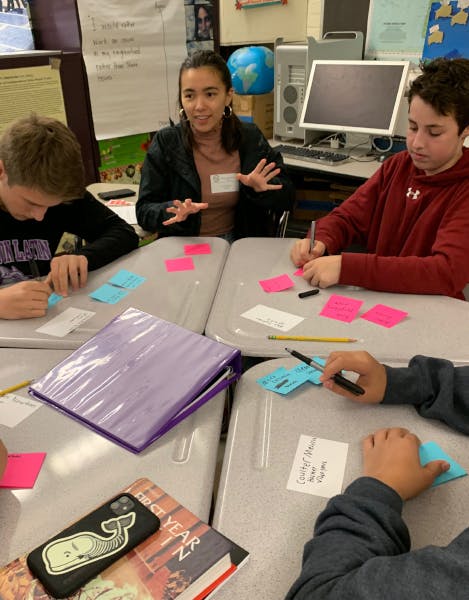
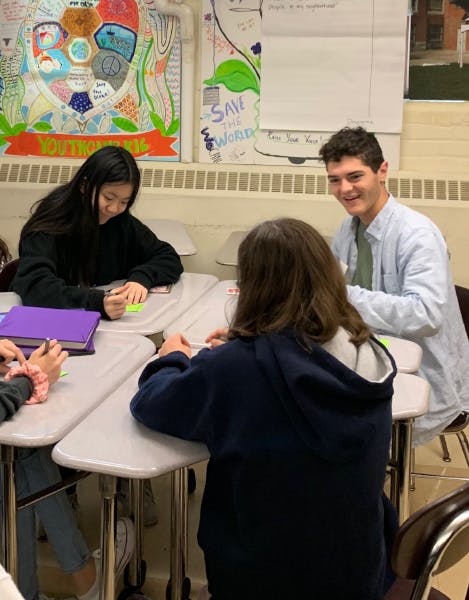

Synthesizing our findings

From our research, we found that most students have issues that they are deeply passionate about, but don’t know how to act on them. Popular topic areas amongst the students we surveyed included climate change, public transportation, and the Boston Public School system.
The majority of students felt disconnected from government, and felt like they weren’t invited into City Hall -- that it was this inaccessible, intimidating place filled with people who didn’t care what they had to say.
We also found disparities in our data when comparing unevenly-resourced schools. For example, almost double the amount of students at an exam school felt that they could create change in their community as opposed to a public school in Jamaica Plain. Our full research findings can be found in our Fall 2019 Research + Discovery Report.
By finding patterns in our data, we created four personas and outlined what their current experiences completing an action civics project would look like using journey mapping. The journey map helped to uncover opportunities for improvement by depicting where emotions for our personas were particularly negative. This allowed the team to see which points our design solution should aim to enhance.
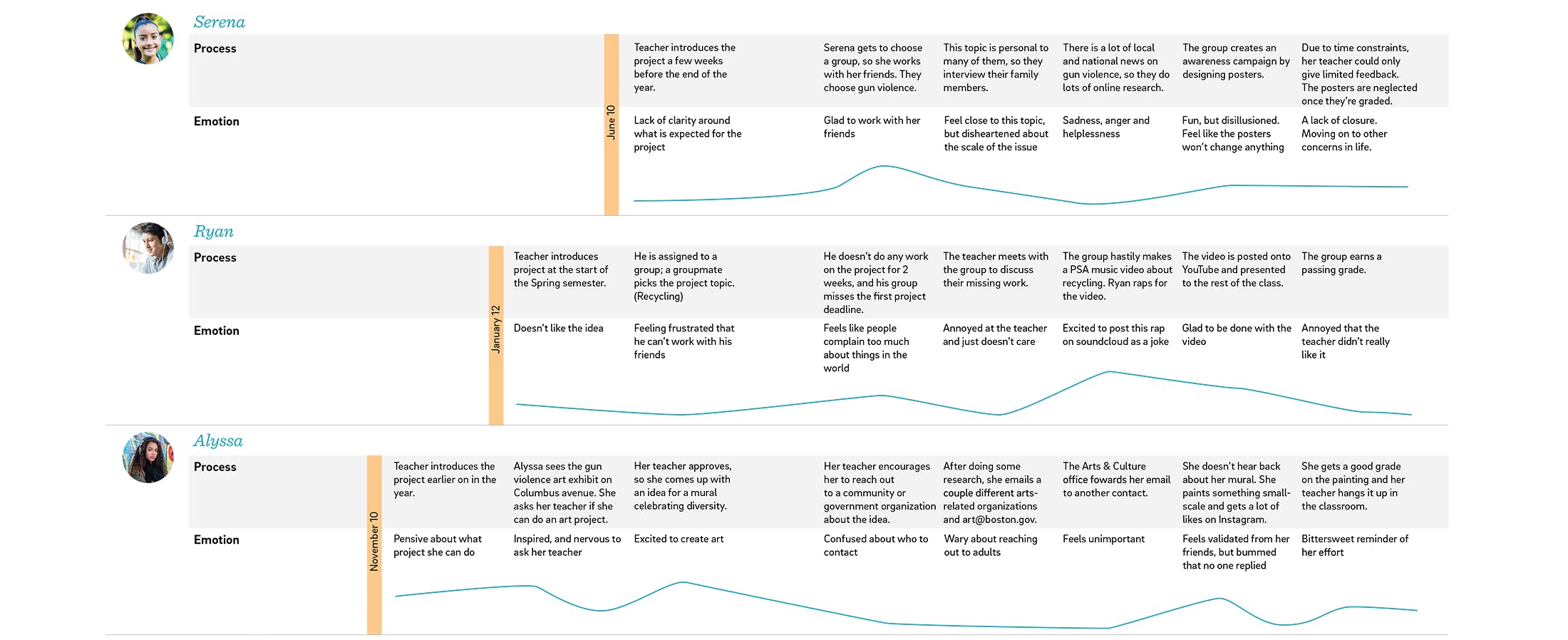
Moving into ideation
In the ideation phase, we used our research insights and problem statements to spark idea generation. Through creative brainstorming exercises, our team was encouraged to explore as many ideas as possible and think outside the box. Initial ideas included an interactive guide (a walk-through of an example civics project for students to use as a resource), a youth concierge who could connect students to the right people in City Hall to answer their questions, and a digital showcase which would allow students to display their projects.
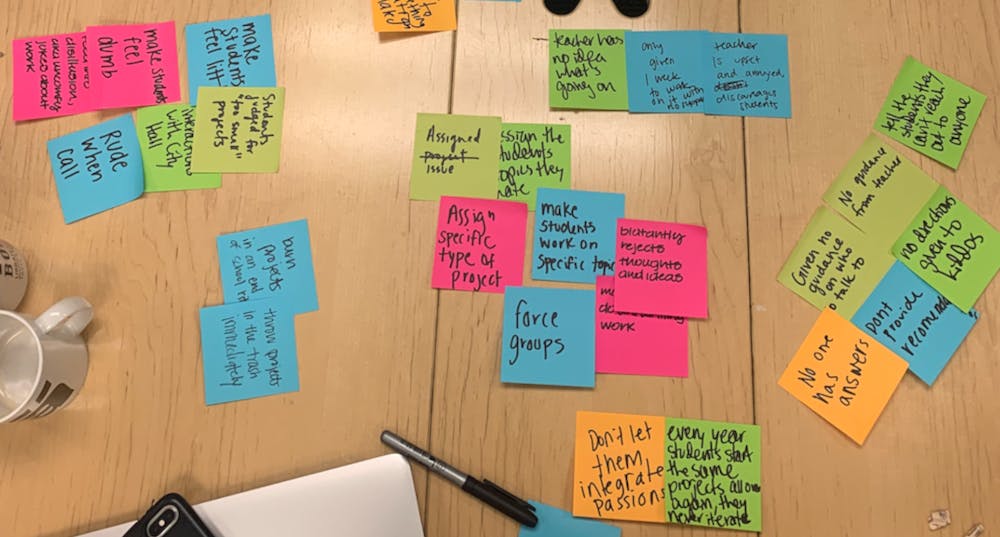
We started with a reverse brainstorming exercise, in which we reversed our problem statement and came up with ideas that would produce the worst outcomes possible. (We flipped these later).
Prototyping and development
Our final prototype ended up being similar to both the Interactive Guide and the Youth Concierge. Our team designed an informative digital tool that could guide and connect students to department ambassadors within City Hall, which we called the Student Action Portal.
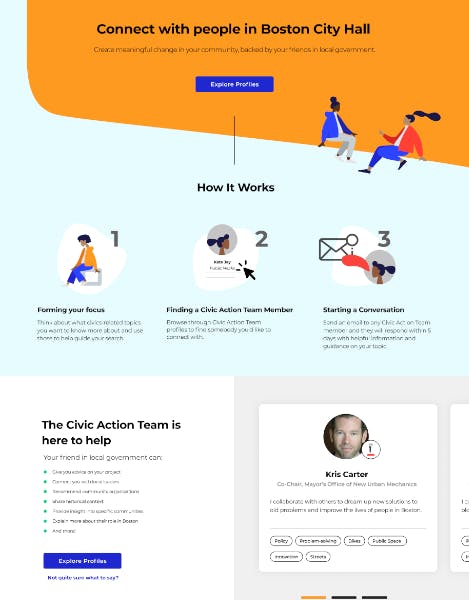
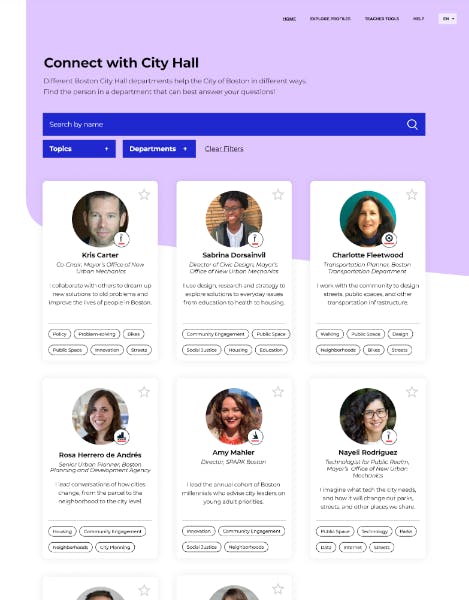
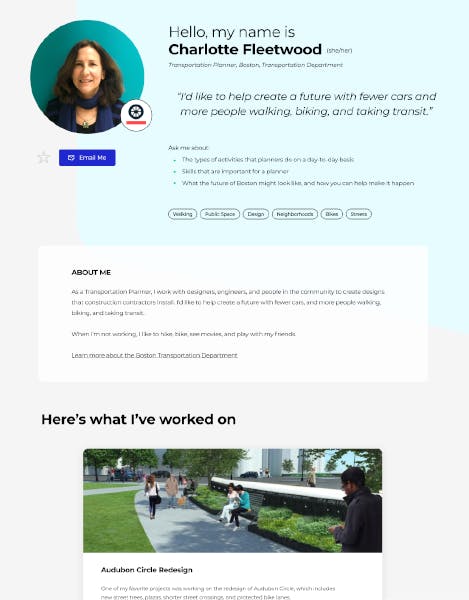
As we continued testing and iterating this prototype, we also started developing it using Contentful (a content management system), SendGrid (an email application), and Netlify (hosting service).
Testing with students
We conducted usability testing sessions with Boston youth at multiple points during our design and development process. To do so, we partnered with community organizations in Boston that offered youth services including Balfour Academy, Hyde Square Task Force, and Asian Community Development Corporation.
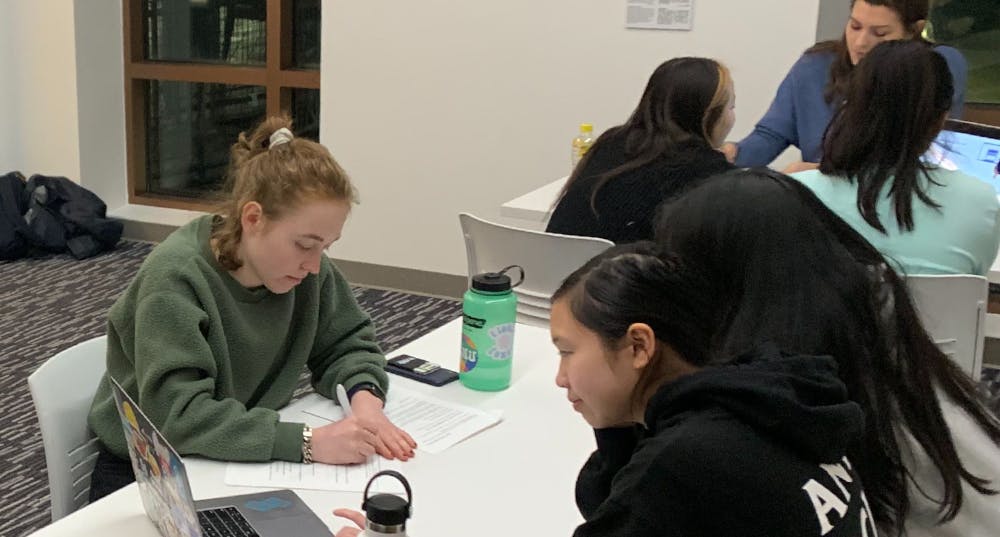
A usability testing session with students at the Asian Community Development Corporation in Downtown Boston.
Our findings from these usability testing sessions led us to make changes, both big and small, to the site-- from the design of our search functionality to our messaging. Our research and testing sessions were a critical way to capture the language that resonated most with our young users. With their input and feedback, we were able to create a website tailored to teens that wasn’t condescending nor trying too hard to be cool.
Additionally, there was psychological value in bringing young people in to help us build and improve our solution. For students who felt intimidated by the government, or like City Hall didn’t care about what they had to say, it was important that our team was going in as an extension of City Hall to ask for their honest, unfiltered thoughts.
"The youth really enjoyed speaking about their experiences and offering feedback - it definitely had some of them re-thinking their relationship to local government!"
-Celina Fernando, Youth Programs Associate at Asian Community Development Corporation
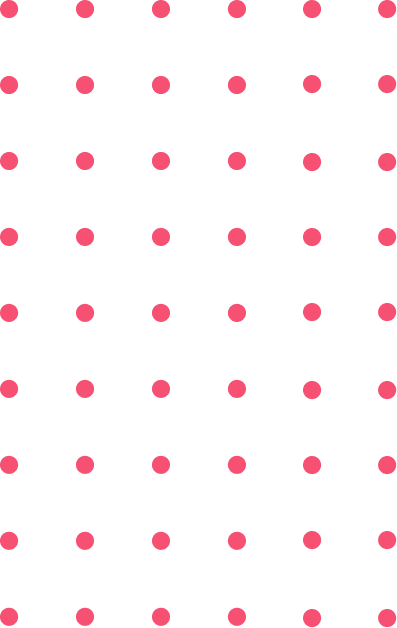
Designing a broader service system
We also took a step back from just the prototype and looked more holistically at how this Student Action Portal would fit into the existing City Hall and classroom ecosystems. We were now asking questions like: What steps will City Hall need to take internally to ensure that the Student Action Portal is launched and maintained successfully? What materials should we be providing to teachers to help them integrate this website into their lessons? How will we be getting the word out about this resource to both teachers and students?
As a result, we created many materials to supplement our website, including feedback forms, email templates, and resources for teachers like lesson plans, videos, and worksheets. We documented all of this information in the form of a service blueprint.
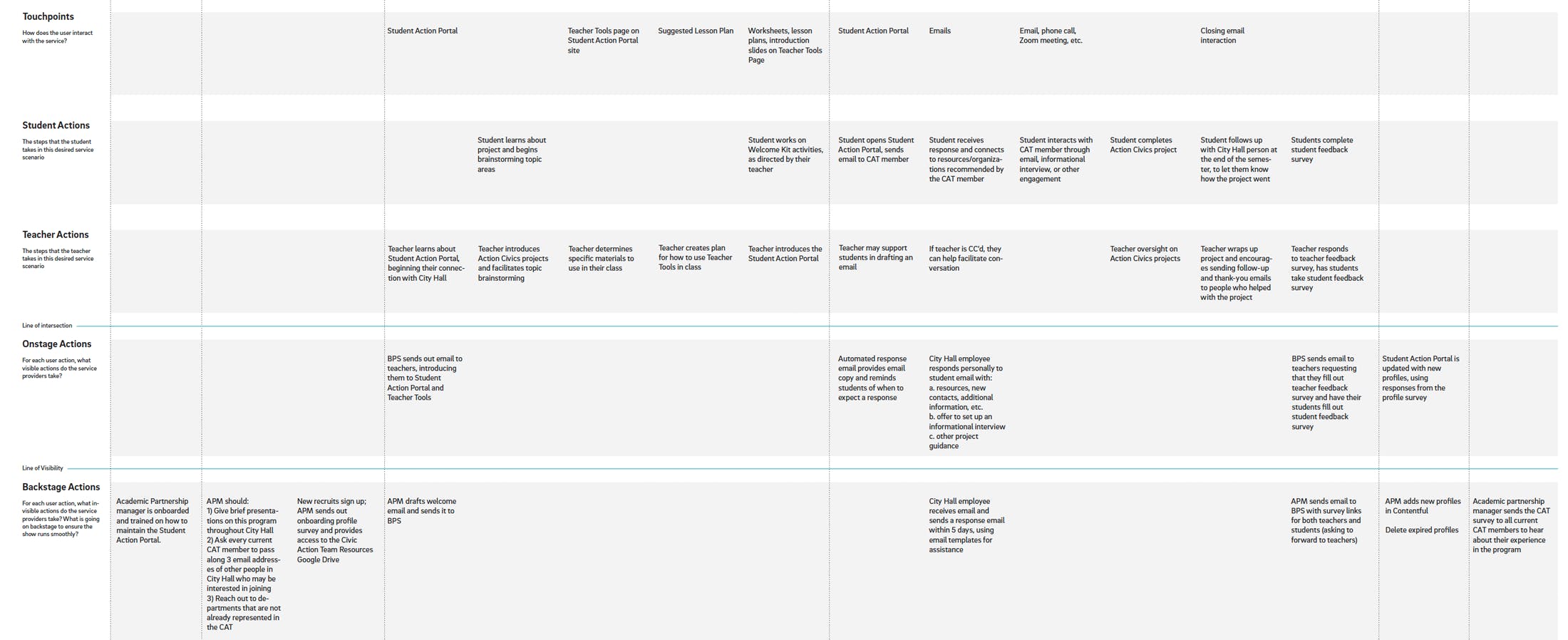
Getting our work out into the world
After our research wrapped up, the Labs director, Tia Thomson, spoke on behalf of her team about Scout Labs’ creative and collaborative research approach on a panel titled “Co-creation: Designing Together for Better Outcomes” at the virtual 2020 Boston Area Research Initiative Conference. This presentation can be listened to in podcast form here.
The team is preparing for a pilot launch of the City Hall Student Action Portal with an initial group of Boston Public School students in the Fall of 2020. This pilot will allow us to test the website on a larger scale and find any kinks that need to be ironed out with the Student Action Portal, within our internal City Hall operational model, and with our suite of teacher resources.
We hope that this site will lower the barriers for young people in Boston to connect with local government, with the aim that students will feel more in the know about the current work that is happening at a local level and the various ways in which they can voice their opinions and push for change.
Next Case Study
Better Than Belts
Wanna stay in the loop?
Join our mailing list!
